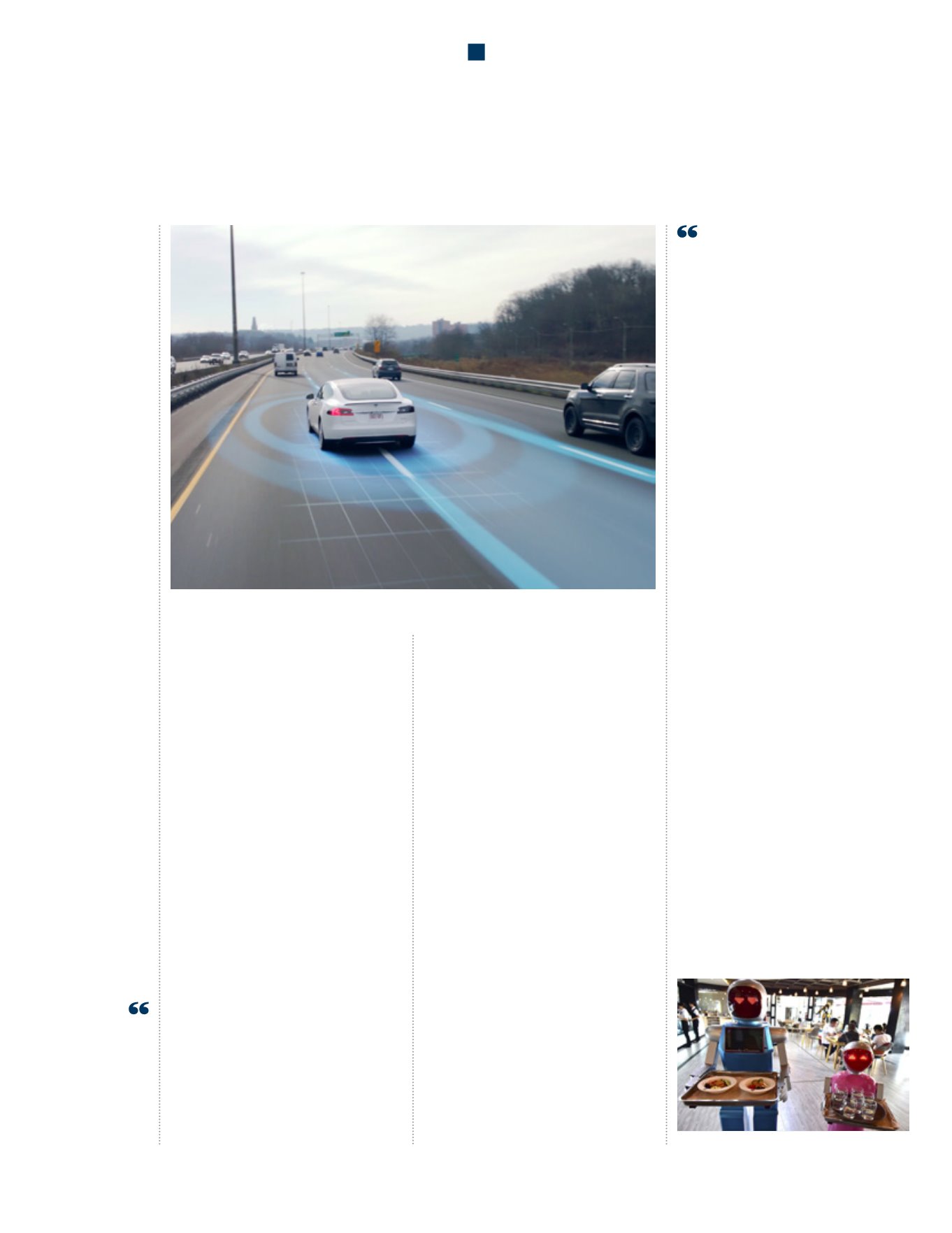

They can also adapt to unforeseen
events, (such as someone getting
in the way of a defined path) which
is what is unlocking the adoption
of autonomous vehicles, and many
other new innovations. This provides
an exciting step forward in human
progress, potentially unlocking
advances that were previously science
fiction. However, it will also create
significant disturbance in existing
industries.
The Oxford Martin School have
produced a paper which sets out
those industries most susceptible
to automation, and the results may
surprise some. It is not necessarily
low value functions that will be
removed, like in the 1980s. The
degree of susceptibility depends on
a human’s relative advantage over AI.
Even matters requiring considerable
intellect are, if process ladened,
potentially replicable and quite
possibly bettered by an AI. As Dr Carl
Frey noted in his talk at our Future
of Work Conference, a computer is
free from the bias, heuristics, and
hangovers that afflict humans. For
accuracy and predictability, pick a
robot. Perhaps consequently it is
those jobs that in fact require the
subjective biases of creativity and
social intelligence that are better
protected. Hence a hairdresser may
be less susceptible to automation
than an accountant.
So is this a good or a bad
thing? Again, it depends on your
perspective. History tells us that those
who own the machines that facilitate
change are going to get rich at the
expense of those who don’t. In an era
of declining real wages, this is only
going to exacerbate the inequality
of wealth in our already polarising
society. However, this is not the whole
story. Although much reference is
paid to the poor conditions and long
hours of workers in the industrial
revolution, it was precisely this ability
to work long hours and gain wealth
that lifted many workers out of
agricultural poverty. Secondly there
is the ‘Luddite Fallacy’. This suggests
that new technology does not reduce
employment, it merely changes its
composition. Innovations reduce
costs; they also create demand for
new goods and services. Jobs find a
new home, although not without a
reskilling lag, which is why education
will be so important in the years to
come. And finally, in the first industrial
revolution someone was needed to
build the looms and the factories.
That is where the property industry
comes in.
Property is an incredibly capital
intensive industry where costs are
amortised over many years. In this
context, unexpected technological
obsolescence is a huge threat to
value. If you owned a new office
building in the 1980s built to a pre-
digital spec, and suddenly there
was a requirement for new service
media that necessitated an increase
in the slab-to-slab height, you
were faced with an instant write-
down. An anticipated move to fully
automated / robotised industrial
space will consolidate the change
in this sector started in the 1980s.
Generally, one might assume that the
offices and shops of the future will
be differently dimensioned, scaled,
and specified than they are today.
Potentially new assets and sectors
will be created. Previous revolutions
created cities; the current one might
now start to rip them apart. If so, a
value model focussed on investment
concentration will come under threat.
More likely is that over time cities
will be repurposed. Meantime, there
has never been a greater need in
recent times to build flexibility into
development projects and watch
carefully those industries that are
being unlocked, and those that are
being diminished. And for all of us on
a personal level, there can be no room
for complacency.
There has never
been a greater need
in recent times to
build flexibility
into development
projects
It is not
necessarily
low value
functions
that will be
removed, like
in the 1980s
Tesla’s self-driving car
Robotic workers
CUSHMAN & WAKEFIELD
20
FUTURE OF WORK


















